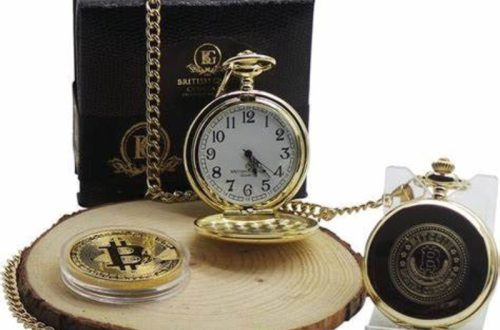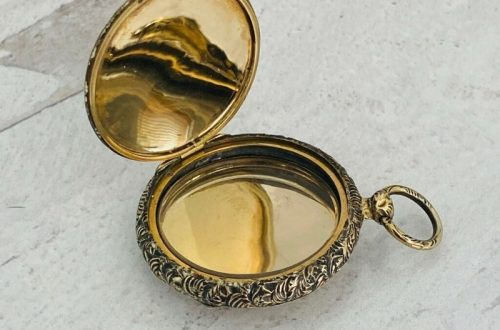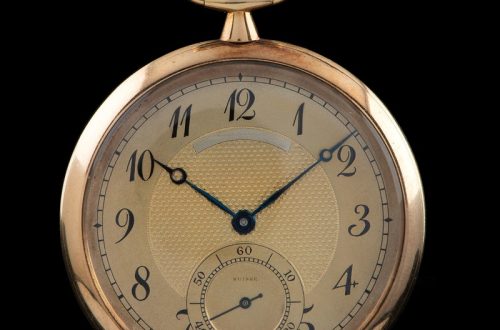The History of Vintage Mechanical Watches
The history of vintage mechanical watches is a tale of precision, craftsmanship, and style. These timepieces first emerged in the 17th century. Skilled artisans handcrafted each one with meticulous care. By the 18th century, they became symbols of status and elegance. Early watches showcased not just the time but also the artisanship that went into making them. Over time, advancements in technology allowed for more accurate and durable designs. Yet, the 20th century saw a peak in mechanical watch production before the advent of quartz technology. Despite this, vintage mechanical watches have retained their allure. Today, they stand as relics of a bygone era of artisanal mastery and mechanical ingenuity. Collectors and enthusiasts cherish these watches for their unique characteristics. Each watch tells a story of an age where time was crafted, not just told. The resurgence of interest in these pieces speaks to a wider appreciation for the artisanal effort that goes into each watch.
The Artisanship Behind Mechanical Watchmaking
The creation of vintage mechanical watches is an art form. It demands a high level of skill and patience. Artisans who craft these watches are often trained for years. They learn intricate techniques that have been passed down through generations. Each piece of the watch, from the gears to the casing, is made with precision. Every detail matters. The artisanship behind these watches is what gives them character. It separates them from mass-produced items.
The process starts with design. Artisans must envision the final piece in every aspect. They select materials that will not only look good but will also stand the test of time. Metals, crystals, and leathers are chosen with care. Then comes the assembly. Artisans put together tiny parts with steady hands. They use specialized tools to place each component. It’s a task that requires focus and accuracy.
Finally, finishing touches are applied. Artisans polish and refine the watch until it shines. They may add engravings or decorations to make each watch unique. This personal touch is part of the craft. It highlights the artisan’s style and dedication. Collectors often seek these personal touches. Vintage mechanical watches are not just tools. They are wearable art created by devoted artisans. In conclusion, artisanship is the soul of mechanical watchmaking. It’s what keeps the tradition alive and revered.

Key Characteristics of Vintage Mechanical Watches
When exploring the realm of vintage mechanical watches, we come across distinct traits that define their elegance and value. These traits vary from watch to watch, but a handful stand out consistently.
Craftsmanship and Materials
The first and perhaps most compelling characteristic is the level of craftsmanship. Watchmakers spent hours, even days, meticulously crafting each timepiece by hand. This level of dedication is rare in modern mass-produced watches. The materials used, such as brass, stainless steel, or gold, were chosen for both beauty and durability.
Movement Complexity
Another hallmark of vintage mechanical watches is their complex movements. Unlike modern quartz watches, which rely on batteries, these mechanical marvels are powered by a sequence of intricate gears and springs working in unison. The movement, visible through a transparent case back in some models, is a testament to the watchmaker’s skill.
Design and Aesthetics
The design of vintage timepieces often reflects the era of their creation. Art Deco influences, elegant dials, and unique hand shapes are common. Each piece offers a glimpse into the past, making it not just a tool for timekeeping but also a historical artifact.
Exclusivity and Rarity
With production numbers far lower than today’s watches, vintage mechanical watches possess an air of exclusivity. Rarity adds to their value, particularly for those models that were limited editions or are no longer in production.
Heritage and Provenance
Finally, the heritage and provenance associated with a vintage watch can greatly influence its allure. Watches that have a known history or were owned by notable individuals carry with them stories that add to their charm and uniqueness.
Understanding these key characteristics can enhance one’s appreciation for vintage mechanical watches. They’re not merely time-telling devices but are pieces of history that showcase the grandeur of past artisanship.
The Revival Movement: Why Vintage Watches are Trending
The revival movement for vintage mechanical watches is a fascinating trend taking hold across the globe. Collectors and fashion enthusiasts are turning back time, showing a renewed interest in these exquisite timepieces. Several factors have contributed to this resurgence in popularity.
Vintage mechanical watches serve as a connection to the past—a tangible link to the craftsmanship and design aesthetic of earlier decades. Unlike modern timekeepers, These watches embody a level of craftsmanship that stands the test of time. The intricacy of their inner workings and their hand-crafted nature set them apart from contemporary, mass-produced items.
With the digital age accelerating the pace of life, there’s a growing desire for more substantial, analog experiences. Vintage watches offer just that, a moment of appreciation for the intricate artisan work that goes into each piece. This is an antidote to the disposable culture that modern gadgets often represent.
Moreover, in an era of mass production, people are seeking unique items. Vintage mechanical watches provide that distinctiveness. Each piece is one-of-a-kind, often created with custom details that can’t be replicated. The rarity of these watches increases their appeal and, by extension, their value. Collectors and enthusiasts prize this uniqueness, turning some models into highly sought-after collectibles.
There’s also an aesthetic allure to vintage designs—they were made in times when fashion was undergoing dynamic changes. Their styles reflect the artistic shifts of their time, offering a variety of looks that are both classic and avant-garde. Thus, these timepieces are not merely functional devices; they are also fashion statements, making a comeback on the wrists of the style-conscious.

Collecting Vintage Mechanical Watches: Tips and Considerations
Collecting vintage mechanical watches is an art in itself. It involves more than just purchasing; it’s about understanding the history and appreciating the craftsmanship. Here are some crucial tips and considerations for aspiring collectors:
- Research Extensively: Before you start, learn about different brands and models. Know about the eras they came from. This knowledge will guide your choices.
- Check Authenticity: Always verify the watch’s authenticity. Look for original parts and serial numbers. Authenticity defines a watch’s value.
- Assess Condition: Check the watch’s condition carefully. Scrutinize the dial, case, and movement for wear and originality. A well-maintained watch is a valuable investment.
- Understand Maintenance: Vintage mechanical watches need regular service to function well. Be prepared for maintenance and repair costs.
- Set a Budget: Decide what you are willing to spend. Vintage watch prices can vary widely. Stick to your budget to avoid overspending.
- Establish Provenance: Provenance can increase a watch’s value. Seek watches with a known history or from esteemed collections.
- Be Patient: Sometimes, the hunt for the perfect watch takes time. Patience is key. Don’t rush into purchases.
- Join Communities: Engage with other collectors and enthusiasts. Join forums and attend events. They can offer support and insight.
- Buy from Reputable Dealers: Purchase from trusted sources to avoid fakes. Reputable dealers ensure you get genuine pieces.
- Invest in Timeless Pieces: Aim for watches that have timeless appeal. They hold value and transcend current trends.
Remember, collecting vintage mechanical watches is a journey. Cherish each step and every piece you add to your collection. This hobby brings joy not just from ownership but from the experience of finding and preserving history.
The Role of Artisans in the Mechanical Watch Resurgence
Artisans play a pivotal role in the resurgence of vintage mechanical watches. Their expertise ensures the longevity and appeal of these timepieces. In an age of automation, the human touch provided by skilled watchmakers sets vintage watches apart. They breathe life into worn mechanisms with a precision that machines cannot replicate.
Craftsmen restore and service watches with a dedication to preserving history. Their work involves disassembling, cleaning, and reassembling delicate parts. Each step requires patience and a steady hand. These artisans not only fix old watches but also pass on their knowledge. They teach apprentices the traditional techniques that keep the craft alive.
The artisan’s role is also key in customizing watches. Enthusiasts seek unique features that reflect personal style. Artisans meet this demand with bespoke modifications and repairs. They create watches that are as unique as the wearers themselves.
For collectors, the artisan’s stamp on a watch adds value. The signature of a renowned watchmaker can turn a timepiece into a collector’s item. These signatures bear witness to the artisanship behind each watch.
Artisans shape the narrative of vintage mechanical watch revival. Their skills uphold the standards of a bygone era. Without them, the mechanical intricacies and aesthetic details that define these watches would be lost. It is the artisan’s touch that renews the legacy of the vintage mechanical watch for future generations to cherish.
Modern Innovations in Vintage Watch Restoration
The world of vintage mechanical watch restoration is advancing with modern innovations. As interest in these timepieces grows, techniques to restore and preserve them are also evolving. At the heart of this transformation are cutting-edge tools and technologies that assist artisans in their meticulous work.

One significant advancement is the use of high-precision instruments. These allow for more accurate diagnysid of issues and finer repairs than ever before. Artisans can now magnify tiny components, making it easier to work on complex movements.
Digital technology also plays a role. With it, artisans can create detailed schematics of watch mechanisms. This helps in understanding and maintaining the original design. Computer-aided design (CAD) programs enable the crafting of parts that are no longer in production.
Another innovation is the development of new materials. These materials can closely mimic those used in the original construction but with added durability. It means vintage watches can continue ticking longer while staying true to their heritage.
3D printing is revolutionizing the field as well. It allows for the reproduction of rare parts that are otherwise impossible to find. Artisans use 3D printing to generate exact replicas of gears, faces, and other components.
Lastly, online platforms have made sourcing parts and sharing knowledge easier. Artisans and collectors connect globally, fostering a community that supports vintage mechanical watch preservation.
In short, vintage mechanical watch restoration blends traditional artisanship with modern innovations. This synergy ensures these cherished timepieces continue to tell time and stories for years to come.
Where to Find and Purchase Vintage Mechanical Watches
Finding and acquiring a vintage mechanical watch requires knowledge of reputable sources. For those interested in entering the world of vintage timepieces, here are several avenues to explore.
Specialty Stores:
Look for stores specializing in vintage watches. These shops often have expert staff who can provide valuable information on the history and condition of a watch.
Online Marketplaces:
Platforms like eBay and Etsy can be treasure troves for vintage watches. However, always check the seller’s reputation and reviews before purchasing.
Auctions:
Auction houses periodically hold sales dedicated to vintage watches. Joining these auctions can lead to finding rare pieces.
Watch Fairs:
Attending watch fairs and shows can offer direct access to a variety of vintage watches, as well as opportunities to network with other collectors and professionals.
Collector Forums and Online Communities:
Online forums and social media groups bring together vintage watch lovers. They can be sources of advice and occasionally offer watches for trade or sale.
Estate Sales:
Estate sales can sometimes have hidden gems at reasonable prices. Keep an eye out for listings in your area.
When searching for a vintage mechanical watch, it’s important to do your due diligence. Always verify the authenticity of the watch and understand its condition. If in doubt, consult with an experienced watchmaker or appraiser. Remember to invest time in learning and become part of the community to enhance your collecting experience. With the right approach, finding and purchasing a vintage mechanical watch can be a fulfilling and exciting journey.




